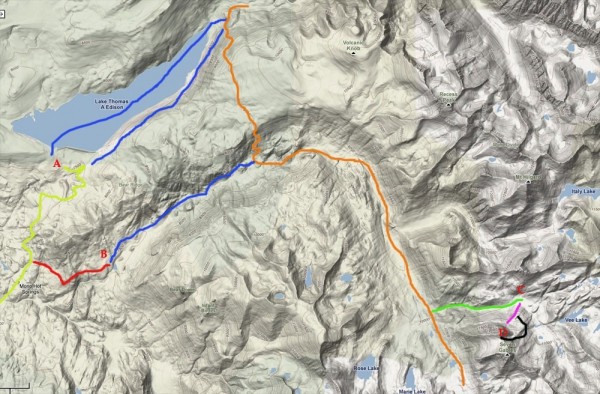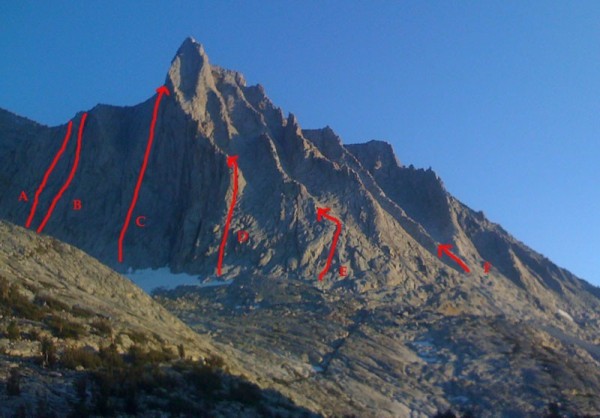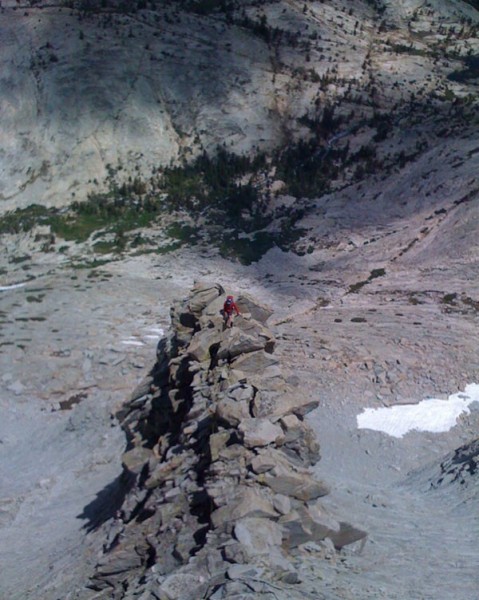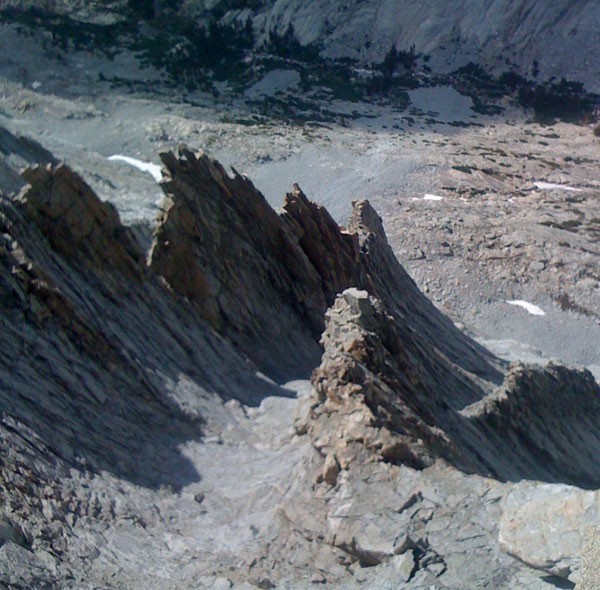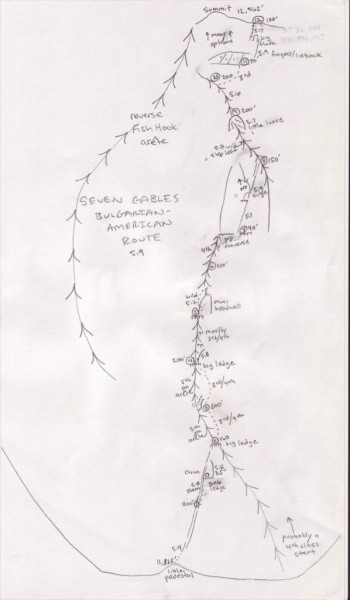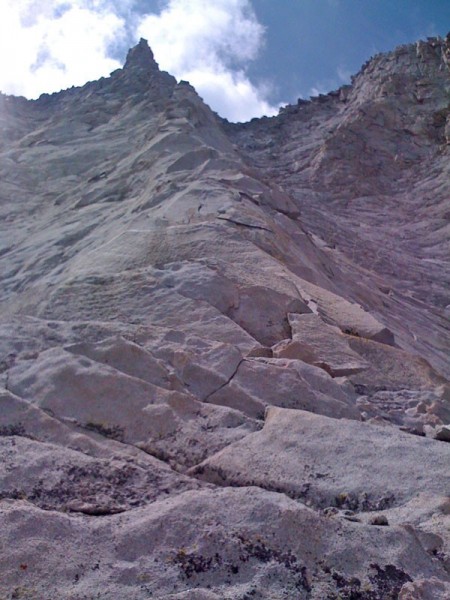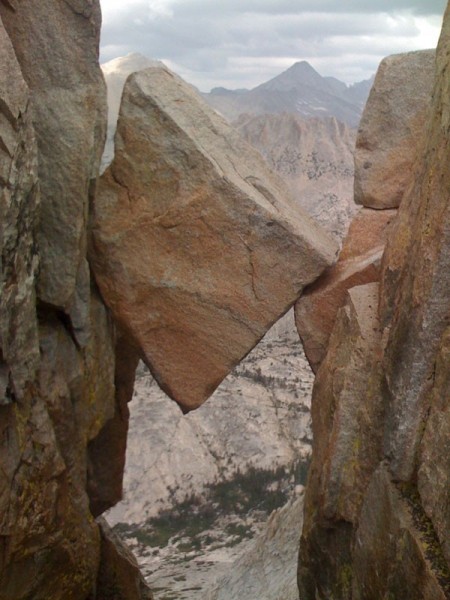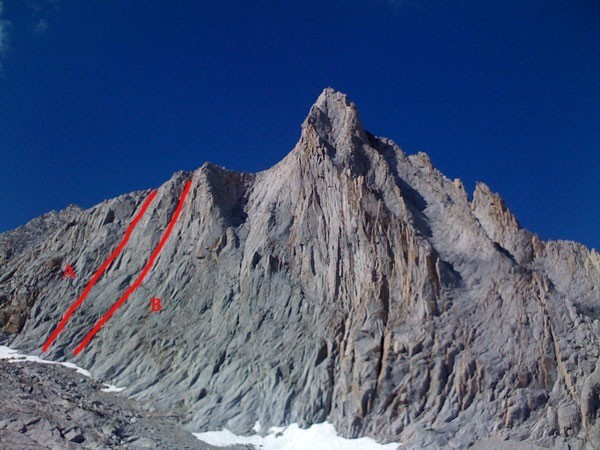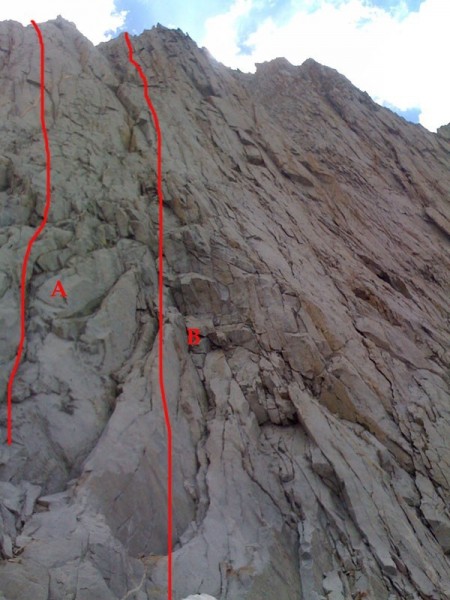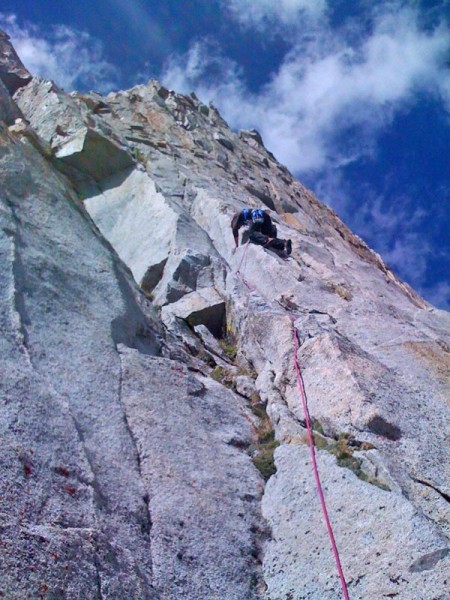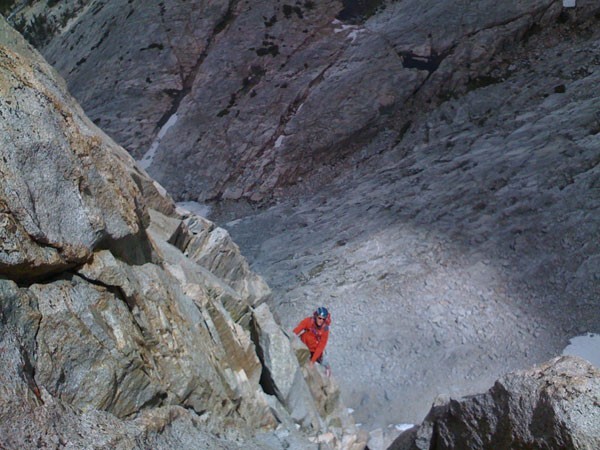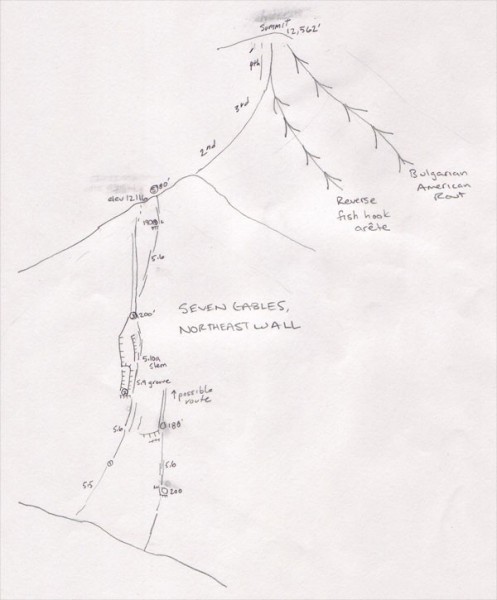I have ignored the western approach to the High Sierra. The eastern approach is just more dramatic and easy for most peaks. When I got an invite to climb Seven Gables, i got my first glimpse of the high western slopes.
The initial drive isn't that exciting. Mammoth and Lee Vining on the East side have dramatic views. Madera and Prather on the west side have Pizza Factory's "we toss em, they're awesome!". But once you start gaining elevation up "the famous four lane" the drive gets cool fast. The last hour of driving to the Vermillion Lakes resort is staggering: a skinny road with big drop offs and views that winds through blasted granite.
Dan Duane, lead journalist, is smart. So smart he hired mules to carry our gear while we hiked with day packs. I highly recommend this if you can get someone else to pay the $700 for it. Jimmy Chin was team photographer and Ivo Ninov was team story teller. Everyone was a pro at their job. Including me: team dork as I was the only one to bring a giant sun hat, trekking poles and a solar panel so i could listen to books on tape the whole time.
We spent the first night at Vermillion Valley Resort. Great spot and their web site has great directions for how to get there:
http://edisonlake.com/site/content/blogcategory/29/54/
OK, its business time. Direct your attention to the map below.
The puke green line is the road in. "A" is the Vermillion Valley Resort. The blue lines are the 3 difference ways to start the approach. The orange line is Pacific Crest Trail/John Muir Trail.
There are three ways to start the approach:
1) The top blue line is the boat taxi way. The lake was pathetically low meaning the boat taxi ride would not have been scenic or cut that much time off. This option is probably cool if the lake is high.
2) Walk along the lake. This option is best if you don't want to pay for the boat taxi and you cant do option 3 below.
3) this is the way we took because the packers recommended it and it involves the least amount of elevation gain and loss. The red line on the map is a 4 x 4 section that was a great adventure to drive. With all-wheel drive and 7 inches of clearance of my 97 Subaru Outback i barely made it. In the future the road could better or it could be worse (high clearance 4 x 4 mandatory). There are water washed roads above a good drop off to a valley below. In some sections you drive on giant granite slabs and have to look carefully for where the road picks up again. Like the Slick Rock trail in Moab but of granite. Too fun.
B on the map is the parking area after the road described above. here there is a great lake to swim in.
The junction of the orange line and the green line is the farthest the pack animals will go. From there you climb about 1000 feet up a thin trail to our camping area marked by C on the map. The purple line is the approach up to the base and D is the lower summit. The summit that all the cool climbing routes go to. The black line is the descent.
Next slide please.
First off, this is not the main summit of the Seven Gables. Most of the cool routes go to this lower summit. And I assume the name Seven Gables comes from the 7 distinct gables/aretes you see in this photo.
Here is my best guess at the routes in this photo
A - Probably the route Galen Rowell did 88. 5 pitches 5.9
B - Our attempt to repeat the Rowell Route. 5 pitches, 5.10a
C - Probably the route Vern Clevenger did
D - A reverse Fish Hook arete that has probably been climbed twice. or maybe never.
E - A cool route we did. If its a first ascent we are calling it the Bulgarian-American Route
F - A route I soloed, 5.6. Probably not a first ascent.
As you can tell from above, solid first ascent info is hard to come by. Dan Duane did a lot of research about the peak and found that just about everything is in question. A few past guidebook authors said that they had drawn in the wrong lines on the photos in the books. So its hard to know exactly who did what when, but i can tell you about the three routes we climbed:
First off, we did route E on the photo. 5.9, 12 pitches with 1400 feet of elevation gain and about 2000 feet of climbing. This was like Temple Crag with golden granite. Exposed ridges with mostly easy climbing with the occassional 5.9 move. You can simul climb a lot of the route if you want.
Here Dan Duane on pitch 7.
Looking down the route from the summit. I am not sure if the arete/gable to the left has been climbed
Here is a topo for our route. If its new, we are calling it Bulgarian-American route because Ivo is from Bulgaria and it sounded cool after a bottle of wine at camp one night. Rack for the route: 2 ea cams up to 2.5". 1 3.5" cam. stoppers.
The next day everyone else wanted to chill. So I soloed the easiest and clean looking gable (Route F in the photo above). This route was really fun. Mostly 4th class on clean golden granite with the occasional exposed 5.6 section. I was a little nervous about the headwall pinnacle you can see at the top of the photo below. But it had a bomber 5.6 crack right through it.
And a cool chockstone just below the summit.
I found bail slings on the lower part of the route. So not sure if anybody had ever climbed this before. Overall the rock was great. Sorta similar to West Ridge of Conness in length and difficulty.
The next day we tried to repeat the Rowell Route from 1988. Apparently this is incorrectly marked in guidebooks. Here is the description from the 1989 AAJ:
"Seven Gables, 13,075 feet, Second Gable, Chimney Route. Letemendia and I asceneded this 1400-foot 5.9 route on the longest face up the northeast wall, while Dick Duane and Kevin Worral did the Right Wall Route (5.9). Both on August 18."
The route we did (route B on the photos below) is probably not what either team did. They were probably to the left. (Route A in the photos below). But none of us knows for sure.
The route we did was 5 pitches and had a definite 5.10a section that was not quite runout. Here is Ivo leading that crux section.
and here is Dan near the top.
And here is a topo for the route we did. Rack: 2 ea cams up to 2.5". stoppers.
I don't know if i would recommend routes on this wall. The rock was fine but if you make the journey to come in here I would recommend a route that goes all the way to the summit (Routes C,D, and E in the photo up top)
Overall this is a great spot to climb. Its like Temple Crag but not as big and with better rock. Because its 17 miles in, you can't realistically do any of the routes car to car in a day. If you have 4 days and the money for packers, this this is an awesome place to climb and hang out.
